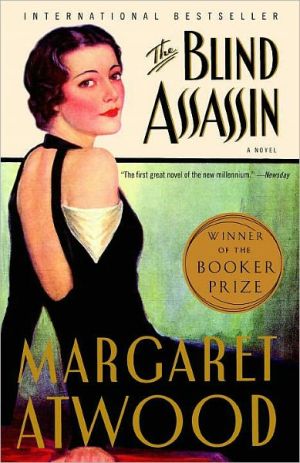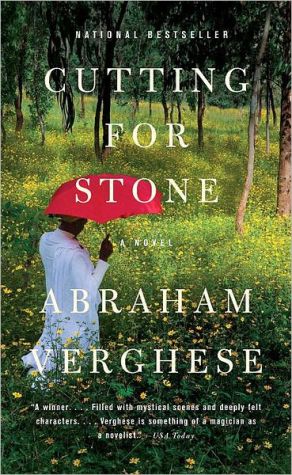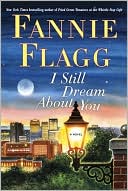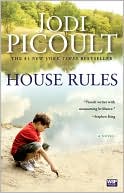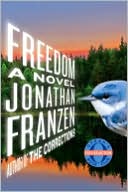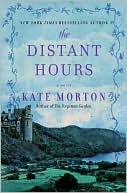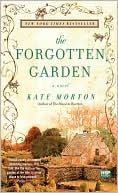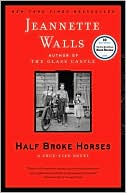The Blind Assassin
The Blind Assassin opens with these simple, resonant words: "Ten days after the war ended, my sister Laura drove a car off a bridge." They are spoken by Iris, whose terse account of her sister's death in 1945 is followed by an inquest report proclaiming the death accidental. But just as the reader expects to settle into Laura's story, Atwood introduces a novel-within-a-novel. Entitled The Blind Assassin, it is a science fiction story told by two unnamed lovers who meet in dingy backstreet...
Search in google:
Margaret Atwood takes the art of storytelling to new heights in a dazzling new novel that unfolds layer by astonishing layer and concludes in a brilliant and wonderfully satisfying twist.For the past twenty-five years, Margaret Atwood has written works of striking originality and imagination. In The Blind Assassin, she stretches the limits of her accomplishments as never before, creating a novel that is entertaining and profoundly serious.The novel opens with these simple, resonant words: "Ten days after the war ended, my sister drove a car off the bridge." They are spoken by Iris, whose terse account of her sister Laura's death in 1945 is followed by an inquest report proclaiming the death accidental. But just as the reader expects to settle into Laura's story, Atwood introduces a novel-within-a- novel. Entitled The Blind Assassin, it is a science fiction story told by two unnamed lovers who meet in dingy backstreet rooms. When we return to Iris, it is through a 1947 newspaper article announcing the discovery of a sailboat carrying the dead body of her husband, a distinguished industrialist.Told in a style that magnificently captures the colloquialisms and clichés of the 1930s and 1940s, The Blind Assassin is a richly layered and uniquely rewarding experience. The novel has many threads and a series of events that follow one another at a breathtaking pace. As everything comes together, readers will discover that the story Atwood is telling is not only what it seems to be—but, in fact, much more.The Blind Assassin proves once again that Atwood is one of the most talented, daring, and exciting writers of our time. Like The Handmaid's Tale, it is destined to become a classic.Bust MagazineRead the book as storytelling of the highest order. Or, if you choose, watch for "Atwood themes"—there's plenty of feminist stuff, political observations, and philosophical questioning of life events both grand and mundane.
The Bridge\ Ten days after the war ended, my sister Laura drove a car off a bridge. The bridge was being repaired: she went right through the Danger sign. The car fell a hundred feet into the ravine, smashing through the treetops feathery with new leaves, then burst into flames and rolled down into the shallow creek at the bottom. Chunks of the bridge fell on top of it. Nothing much was left of her but charred smithereens.\ I was informed of the accident by a policeman: the car was mine, and they'd traced the licence. His tone was respectful: no doubt he recognized Richard's name. He said the tires may have caught on a streetcar track or the brakes may have failed, but he also felt bound to inform me that two witnesses - a retired lawyer and a bank teller, dependable people - had claimed to have seen the whole thing. They'd said Laura had turned the car sharply and deliberately, and had plunged off the bridge with no more fuss than stepping off a curb. They'd noticed her hands on the wheel because of the white gloves she'd been wearing.\ It wasn't the brakes, I thought. She had her reasons. Not that they were ever the same as anybody else's reasons. She was completely ruthless in that way.\ "I suppose you want someone to identify her," I said. "I'll come down as soon as I can." I could hear the calmness of my own voice, as if from a distance. In reality I could barely get the words out; my mouth was numb, my entire face was rigid with pain. I felt as if I'd been to the dentist. I was furious with Laura for what she'd done, but also with the policeman for implying that she'd done it. A hot wind was blowing around my head, the strands of my hair lifting and swirling in it, like ink spilled in water.\ "I'm afraid there will be an inquest, Mrs. Griffen," he said.\ "Naturally," I said. "But it was an accident. My sister was never a good driver."\ I could picture the smooth oval of Laura's face, her neatly pinned chignon, the dress she would have been wearing: a shirtwaist with a small rounded collar, in a sober colour - navy blue or steel grey or hospital-corridor green. Penitential colours - less like something she'd chosen to put on than like something she'd been locked up in. Her solemn half-smile; the amazed lift of her eyebrows, as if she were admiring the view.\ The white gloves: a Pontius Pilate gesture. She was washing her hands of me. Of all of us. What had she been thinking of as the car sailed off the bridge, then hung suspended in the afternoon sunlight, glinting like a dragonfly for that one instant of held breath before the plummet? Of Alex, of Richard, of bad faith, of our father and his wreckage; of God, perhaps, and her fatal, triangular bargain. Or of the stack of cheap school exercise books that she must have hidden that very morning, in the bureau drawer where I kept my stockings, knowing I would be the one to Wnd them.\ When the policeman had gone I went upstairs to change. To visit the morgue I would need gloves, and a hat with a veil. Something to cover the eyes. There might be reporters. I would have to call a taxi. Also I ought to warn Richard, at his office: he would wish to have a statement of grief prepared. I went into my dressing room: I would need black, and a handkerchief.\ I opened the drawer, I saw the notebooks. I undid the crisscross of kitchen string that tied them together. I noticed that my teeth were chattering, and that I was cold all over. I must be in shock, I decided.\ What I remembered then was Reenie, from when we were little. It was Reenie who'd done the bandaging, of scrapes and cuts and minor injuries: Mother might be resting, or doing good deeds elsewhere, but Reenie was always there. She'd scoop us up and sit us on the white enamel kitchen table, alongside the pie dough she was rolling out or the chicken she was cutting up or the fish she was gutting, and give us a lump of brown sugar to get us to close our mouths. Tell me where it hurts, she'd say. Stop howling. Just calm down and show me where.\ But some people can't tell where it hurts. They can't calm down. They can't ever stop howling.
\ From Barnes & NobleThe Barnes & Noble Review\ In The Blind Assassin, Margaret Atwood presents her readers with a novel-within-a-novel—or, more accurately, a story told within a novel within a novel. This complex interweaving of multiple narratives draws the reader forward through a dramatic and turbulent tale of love, betrayal, and death, while simultaneously using its structural puzzles to reconsider the act of storytelling itself. The effect is mesmerizing. \ Atwood's novel begins as its central character, Iris Chase Griffen, recalls with a shocking calmness the afternoon of the suicide of her sister, Laura, just after the end of World War II. As quickly as we become immersed in Iris's narration, however, we are taken back out again, presented first with a newspaper account of Laura's inquest, and then with the prologue to Laura Chase's posthumously published novel, The Blind Assassin. This blend of documentary materials with Iris's first-person narration continues throughout Atwood's novel, with each level of the text calling the veracity of the others into question.\ Iris's narration takes the form of a memoir, written 50 years after the war, recounting the rise and fall of the Chase family fortune and relating the events that culminated in Laura's suicide and Iris's fall from grace. The Chases, a solid Canadian manufacturing clan, came to local prominence when, in the late 19th century, Iris's grandfather built a factory to produce buttons from homely materials such as wood and bone. This pragmatism—a solid product, a firm but kind business ethic—is useless in the face of the crises of the 20th century, however. Just as the factory is threatened with closure during the Depression, the family itself begins to disintegrate, and Iris is maneuvered into an arranged marriage to Richard Griffen, a thoroughly modern industrialist. In attempting to save her family by making this union, Iris inadvertently abandons her ethereal, vulnerable younger sister, Laura.\ Laura's novel, a wildly successful and scandalously frank tale of illicit love, follows a young woman of the upper classes through her affair with a shadowy left-wing sympathizer hiding from the police. Their erotic relationship, fundamentally riven by their class differences, is cemented by a story told by the man, who supports himself by writing pulp fiction. In this story, which combines the devices of science fiction and tales of Arabian adventure, a young slave boy becomes involved in a plot to kill the king and overthrow his society's abusive class system. This boy, the blind assassin of both novels' titles, is meant to carry out this plot by killing and taking the place of a young mute girl, who is the next day to be slain by the king in the aristocracy's ritual of sacrifice.\ The drama of Atwood's novel takes place in the often conflicting interplay between these multiple narratives. The blind assassin and the mute sacrificial maiden of the man's tale may be allegorical figures for the lovers of Laura's novel, who may in turn be figures for Laura herself and Alex Thomas, the radical who may have been her lover. Or they may be none of these, instead revealing some other, hidden truth about the world inhabited by the Chases and the Griffens. Similarly, the newspaper accounts of the events that take place within the novel and the historical events of the world just outside both clarify and mislead. Through these articles, the reader is led to understand the political dramas that lie beneath the novel's personal conflicts as well as the inevitably subjective nature of storytelling itself, as all of The Blind Assassin's many narratives are colored by their narrators' unspoken motives.\ In this lyrical, complex, and enthralling novel, through her nuanced characters and her evocative prose, Atwood once again creates a world as compelling as that of The Handmaid's Tale. The Blind Assassin is both entertaining and intelligent, both a page-turner and a work of literature, absorbing the reader with its vividly rendered plot and characters while slyly posing difficult questions about the nature of narrative itself.\ —Kathleen Fitzpatrick\ Kathleen Fitzpatrick is assistant professor of English and media studies at Pomona College in Claremont, California.\ \ \ \ \ \ From the Publisher"The first great novel of the new millennium."\ —Newsday\ \ "Absorbing... expertly rendered... Virtuosic storytelling [is] on display."\ —The New York Times\ "Brilliant... Opulent... Atwood is a poet.... as well as a contriver of fiction, and scarcely a sentence of her quick, dry yet avid prose fails to do useful work, adding to a picture that becomes enormous."\ —John Updike, The New Yorker\ \ "Chilling... Lyrical... [Atwood's] most ambitious work to date."\ —The Boston Globe\ "Hauntingly powerful.... A novel of luminous prose, scalpel-precise insights and fierce characters... Atwood's new work is so assured, so elegant and so incandescently intelligent, she casts her contemporaries in the shade."\ —The Atlanta Journal—Constitution\ "Grand storytelling on a grand scale... Sheerly enjoyable."\ —The Washington Post Book World\ "Bewitching... A killer novel.... Atwood's crisp wit and steely realism are reminiscent of Edith Wharton... A wonderfully complex narrative."\ —The Christian Science Monitor\ "A tour de force."\ —Chicago Tribune\ \ \ \ Bust MagazineRead the book as storytelling of the highest order. Or, if you choose, watch for "Atwood themes"—there's plenty of feminist stuff, political observations, and philosophical questioning of life events both grand and mundane.\ \ \ \ \ Laura MillerThe Blind Assassin has enough mysteries to keep even a casual reader engaged, and with respect to solutions, it is less scrupulously committed to ambiguity than Ms. Atwood's 1997 novel, Alias Grace. As with all of Ms. Atwood's recent fiction, The Blind Assassin, despite what sounds like a romantic plot, has been scoured free of any trace of sentimentality. There is a steely quality to Ms. Atwood's writing that's a bit scary but also exhilarating; no one gets away with anything, especially not her female narrators--and they know better than to try.\ — Wall Street Journal\ \ \ \ \ Publishers WeeklyFamily secrets, sibling rivalry, political chicanery and social unrest, promises and betrayals, "loss and regret and memory and yearning" are the themes of Atwood's brilliant new novel, whose subtitle might read: The Fall of the House of Chase. Justly praised for her ability to suggest the complexity of individual lives against the backdrop of Canadian history, Atwood here plays out a spellbinding family saga intimately affected by WWI, the Depression and Communist witch-hunts, but the final tragedy is equally the result of human frailty, greed and passion. Octogenarian narrator Iris Chase Griffen is moribund from a heart ailment as she reflects on the events following the suicide in 1945 of her fey, unworldly 25-year-old sister, Laura, and of the posthumous publication of Laura's novel, called "The Blind Assassin." Iris's voice--acerbic, irreverent, witty and cynical--is mesmerizingly immediate. When her narration gives way to conversations between two people collaborating on a science fiction novel, we assume that we are reading the genesis of Laura's tale. The voices are those of an unidentified young woman from a wealthy family and her lover, a hack writer and socialist agitator on the run from the law; the lurid fantasy they concoct between bouts of lovemaking constitutes a novel-within-a-novel. Issues of sexual obsession, political tyranny, social justice and class disparity are addressed within the potboiler SF, which features gruesome sacrifices, mutilated body parts and corrupt, barbaric leaders. Despite subtle clues, the reader is more than halfway through Atwood's tour de force before it becomes clear that things are not what they seem. Meanwhile, flashbacks illuminate the Chase family history. In addition to being psychically burdened at age nine by her mother's deathbed adjuration to take care of her younger sibling, na ve Iris at age 18 is literally sold into marriage to a ruthless 35-year-old industrialist by her father, a woolly-minded idealist who thinks more about saving the family name and protecting the workers in his button factories than his daughter's happiness. Atwood's pungent social commentary rings chords on the ways women are used by men, and how the power that wealth confers can be used as a deadly weapon. Her microscopic observation transforms details into arresting metaphors, often infused with wry, pithy humor. As she adroitly juggles three plot lines, Atwood's inventiveness achieves a tensile energy. The alternating stories never slacken the pace; on the contrary, one reads each segment breathlessly, eager to get back to the other. In sheer storytelling bravado, Atwood here surpasses even The Handmaid's Tale and Alias Grace. Copyright 2000 Cahners Business Information.\ \ \ \ \ Publishers WeeklyAtwood's Booker Prize-winning novel, with its 1930s setting and stories within stories, is well suited to audio dramatization. O'Brien has simplified and streamlined the structure so that it jumps around in time less and makes clearer parallels between past, present and the whimsical internal novel. Some dialogue has been added, while many meditative and descriptive sections are absent, but the new words blend gracefully with Atwood's own, and her elegant style remains intact despite the omissions. Abundant sound effects make the production much richer than many audiobooks; it sometimes seems like a movie without the visuals, with chirping birds, clinking silverware and the murmur of crowds filling in the background. Music that alternates between a lovely, slightly melancholy theme and an ominous one, helps highlight the shifts from the protagonist Iris's personal history to her retelling of the novel. The skills of the cast almost make such extras unnecessary: the three women who play Iris at different ages capture her brilliant but frustrated spirit perfectly, while the actresses for her troubled younger sister, Laura, find just the right blend of dreaminess and defiance. Though in some respects this adaptation is less intricate than the rather complicated original, the condensation serves it well, making the story more tightly wound and intense in a way that should attract listeners who may be put off by Atwood's writing. (Sept.) Copyright 2005 Reed Business Information.\ \ \ \ \ Library JournalOnce again, Atwood (Wilderness Tips) has written a compelling novel with many different layers of interpretation. At first glance, these tales are a collection of disjointed short stories; yet upon further examination, they are the reminiscences of an old woman named Iris, with death appearing to be the unifying thread connecting them. At the same time, these stories comprise the Chase family history, and Iris uses them to describe her life, beginning with her parents' marriage and ending with the deaths of various relatives. Margot Dionne renders an acceptable reading, but it is far from outstanding. The story-within-a-story format permits the listener to stop and start without losing his or her train of thought. The sound volume is consistent. This program will be in demand by Atwood fans; recommended for public libraries.--Laurie Selwyn, San Antonio P.L. Copyright 2000 Cahners Business Information.\ \ \ \ \ Michiko Kakutani[An] absorbing new novel, of all the author's books to date, The Blind Assassin is most purely a work of entertainment — an expertly rendered Daphne du Maurieresque tale that showcases Ms. Atwood's narrative powers and her ardent love of the Gothic.\ —New York Times\ \ \ \ \ Ron Charles...you'll be hooked 'till the whole tragic story finally comes to rest in the most surprising place...How goofy to repeatedly interrupt this haunting novel with episodes about the Lizard Men of Xenor. And yet, what great fun this is —and how brilliantly it works to flesh out the dime-novel culture of the 1930's and to emphasize the precarious position of women.\ —The Christian Science Monitor\ \ \ \ \ Megan HarlanAtwood performs a spectacular literary sleight of hand, fashioning a bewitching, brilliantly layered story of how people see only what they wish to, and how terrible the consequences of not voicing the truth can be.\ —Entertainment Weekly\ \ \ \ \ Paul GrayIris Chase is a brilliant addition to Atwood's roster of fascinating fictional narrators. Not only is she her story sinuously complex, but she is entertaining company. Her comments on her story are crotchety and amusing. She is also frank about her occasional evasions: "I know it's wrong, not because of what I've set down but because of what I've omitted. What isn't there has a presence, like the absence of light." This inexorable bubbling up of the unspoken makes The Blind Assassin unforgettable. \ —Time Magazine\ \ \ \ \ Kirkus ReviewsAtwood's skillfully woven tenth novel is her most ambitious and challenging work to date, and a worthy successor to her recent triumph, Alias Grace. It tells two absorbing stories that cast an initially enigmatic, ultimately pitilessly revealing light on each other. The central one is octogenarian Iris Griffen's bitter reminiscence of her life as the privileged daughter of a prosperous Ontario family, the Chases, and later as wife to Richard Griffen, the businessman who effectively inherits and firmly directs the Chase fortunes. The counterpart story, The Blind Assassin, is a strange futuristic tale that dramatizes in unusual (faux-Oriental) fashion a nameless woman's obsession with a science-fiction writer whose imaginings blithely mirror and exploit his "power" over her. This latter tale is published as the work of Iris's younger sister Laura, whose death in a 1945 automobile accident is judged by all who knew the sisters "as close to suicide as damn is to swearing." Newspaper items reporting notable events in the lives of the Chases and Griffens over a period of more than sixty years further enrich a many-leveled, smartly paced narrative that gradually discloses the nature and root causes of Laura's unconventionality and "madness," the full extent of Richard's compulsive aggrandizement and isolationism, and the price exacted from Iris for the "convenience" of her marriage. Intermittent echoes of Forster's Howards End sound throughout this bleak saga of political, social, and gender conflict. And Atwood keeps our attention riveted by rendering her increasingly dramatic story in a fluent style distinguished by precise sensory description ("the thin, abstemious rain of early April") and thought-provoking metaphor ("Laura was flint in a nest of thistledown"). Furthermore, a bombshell of a climactic surprise (which we probably should have seen coming) lurks in the stunning final pages. Boldly imagined and brilliantly executed.\ \
